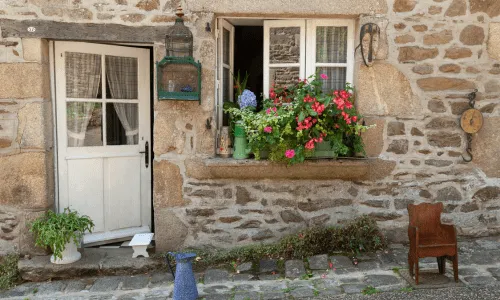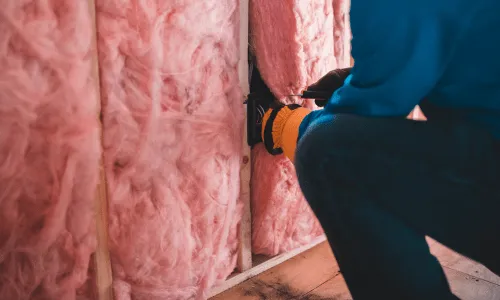What to look at in a house before buying?
Have you found the house of your dreams? Before signing the compromise, pay attention to several details that may cost you a lot later.
📅
8/10/2025

Buying a home is a major step and represents an important investment. You have to take the time to observe certain criteria during visits so as not to have problems when you are the happy owner. Some points should be checked in order to make a purchase with complete peace of mind and avoid unpleasant surprises.
Why is location and environment crucial?
One of the first things to check is of course the location and environment of the house. A nice neighborhood, close to amenities, with a quiet environment, it's the quality of daily life. In addition, the proximity of schools, transport and shops impacts the practicality and resale of the property.
You should also take an interest in the ambiance of the neighborhood. A neighborhood that is too noisy or subject to nuisances can quickly become a nightmare. Beyond practice, you must therefore project yourself into this environment to know if it suits you.
How to assess the general condition of the house?
A general overview already gives some clues, but further control is needed to limit the risks. The general condition of The house testifies to the maintenance it has received over the years, which affects its durability and the cost of the work to be considered.

What are the points of the building to be monitored?
The roof, an essential element
A visit to the attic or an external visual examination can assess the condition of the roof. Displaced, broken, or missing tiles can lead to water ingress. Also looking to see if there is moss or vegetation allows you to judge the maintenance of the roof. A roof in poor condition is expensive.
If access is possible, examining the frame allows you to get a precise idea of its condition. Humidity or xylophage stains are sometimes signs that only a professional can confirm.
The foundations, guarantee of the stability of the property
Checking the outside perimeter of the house reveals suspicious cracks or subsidence. If the land is in a risky or clay zone, vigilance is required because this increases the risk of structural disorders.
Exterior walls and facades under study
A careful examination of exterior walls and facades reveals the presence of excessive foam, major cracks or peeling of the plaster. These imperfections can sometimes mask more serious problems with humidity or building movement.
Also look at the joints, bricks or stones: their condition tells you if work is to be planned soon.

The condition of the soil
During the visit, the condition of the ground should not be overlooked. You should carefully check the evenness of the floors in all rooms. If you see irregularities, it means that the structure may not be stable. There could be problems with the frame.
When it comes to flooring, you need to make sure of its quality. You should then ask questions about their functionality. Is the material very suitable for the room where it is located?
For example, humid rooms such as the kitchen or shower should not have raw wood floors. If you decide to buy the house, you should budget for renovating the flooring.
Which technical installations should be preferred during the visit?
To avoid unpleasant surprises and live peacefully, you must remain vigilant about technical equipment, which guarantees comfort and safety.
The condition of the windows
Recent double-glazed windows guarantee optimal thermal and sound insulation and significant energy savings. Check that they close properly, that there is no humidity or condensation around the frames and that they are easy to open.
Checking each window during the visit avoids surprises after installation.
The electrical network
Electricity is at the heart of home comfort and must be up to standard. Check the date of installation, the condition of the electrical panel, the presence of an earth outlet, the number of sockets in each room.
Checking switches, luminaires and fixed appliances gives information on the reliability of the network and on whether or not it is appropriate to reinstall the system.
Plumbing, heating and ventilation
Checking the visible pipes, faucets and sanitary facilities gives clues: no leaks, sufficient flow, flush or functioning boiler are all points to check before engaging.
Also check the type of heating (gas, oil, electric, heat pump) and the presence of ventilation, essential for the health of the home and its inhabitants.
Special attention should be paid to the ventilation system. Normally, the house must be equipped with one of the systems, namely the single-flow VMC or dual-flow VMC. Note that VMC means Controlled Mechanical Ventilation. This system regulates the humidity in the house by removing polluted air inside and introducing fresh air from outside.
It is therefore advisable to check its operation carefully to ensure a healthy environment. To detect a malfunction, you need to look for traces of moisture or mold on the wall, ceiling, and floor.
Why does thermal and sound insulation make a difference?
Living well in a house is also good insulation. It plays on the reduction of energy bills and on inner peace (in the city or near a road).
Checking the condition of the insulators in the attics, walls and windows ensures comfortable living in summer and winter. Also require an energy performance diagnosis: it precisely indicates the property's ability to maintain heat and limit noise losses.
Note that during the energy performance diagnosis, the certified diagnoser will grade the house from A to G. The A grade indicates excellent energy performance. On the other hand, the house is classified in the category Thermal colanders when the grade approaches G (F and G).
For the latter case, the house must first be renovated before the transaction is completed. Obviously, the work to bring it up to standard will be the responsibility of the owner. For houses whose energy performance leaves much to be desired (D and E), the impact is on the selling price. Indeed, the buyer can ask to lower the price since he still has to do work for later.
For information, the mandatory diagnoses are the DPE or the energy performance diagnosis, the Carrez law diagnosis, the lead diagnosis, the termite diagnosis, the asbestos diagnosis, the asbestos diagnosis, the electricity diagnosis, the gas diagnosis, ERP diagnosis or State of Risks and Pollution, noise diagnosis and non-collective sanitation diagnosis.
For an area whose delimitation is carried out by prefectural decree, the diagnoser must assess the presence of a risk of merula.

What papers and diagnoses do you need before starting?
Before signing, require the submission of all mandatory diagnoses The file must in particular contain the diagnoses lead, asbestos, termites, energy performance.
Consulting them allows you to get a precise idea of the real condition of the house and to make an informed decision. In addition, requiring all recent work invoices, maintenance contracts or insurance certificates helps to clarify the history of the property.

Article rédigé par Mélanie Jacquet,
Experte immobilière du blog MeCaza.
To go further

21/11/2025
What is a land business? Understand, invest, choose
What is a land business? Definition, economic model, taxation, advantages and advice for investing in sustainable real estate assets.
Lire l'article ⭢
10/11/2025
How to make yourself known when you are a real estate hunter?
Visibility, local reputation and digital strategy: learn how a real estate hunter can become known, build credibility and generate more customers.
Lire l'article ⭢
19/11/2025
Real estate buying devices: the complete guide to take full advantage of them
PTZ, Pinel, Denormandie, Malraux... Discover all the real estate purchase systems available in 2025 to buy or invest smarter.
Lire l'article ⭢
